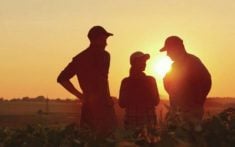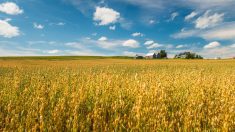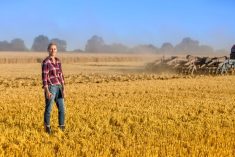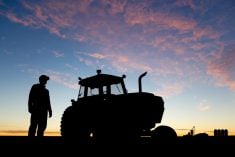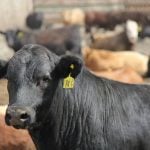Land is up. Inputs are up. Commodities are volatile. And that’s just a start. Climate change is getting real. Interest rates are too. And the international scene is chaos. Does it all add up to good news for your farm in 2024? Bad news? And what can you do to keep your farm on the right side of history, not only safe and prosperous in the near term but well positioned for future generations?
While they won’t tell you they’ve got all the answers, we sought out Tyler McCann, managing director of the Canadian Agri-Food Policy Institute, and Jake Leguee, managing partner and president of Leguee Farms, Saskatchewan, because they’ve been doing enough serious thinking about the questions to get us all thinking some more.
Below, we’ve got some questions for them. What changes do they see seeping in slow and steady? What might pop out of left field? Will 2024 be the year the dam bursts?
Read Also

The big squeeze: How to be fair to siblings during farm succession
Managing sibling business relationships on family farms.
Only one thing is for sure, the two say. We used to take a lot of things for granted. We can’t anymore.
Tyler McCann
Canadian Agri-Food Policy Institute
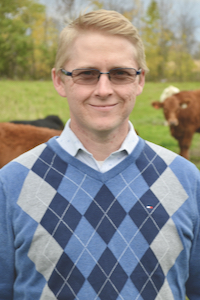
CG: Are we really heading into a different world? Or are we about to get a rude wake-up call?
Tyler McCann: Abundance is disappearing. The fundamental reality has been that we produced too much and we needed to find new markets for it all, which is why our trade agenda has been so important. Producing too much can also depress prices, which means we needed government programs and policies.
We’re starting to shift into a world of scarcity. This is good news for farmers because it will probably solve our commodity price issue. We’ve seen this play out on the crop side for years and we’re seeing it in the beef sector.
CG: But you see challenges too?
McCann: It’s a different kind of global landscape. Our trade policies used to be written to make sure our products could get out of Canada and into other markets. Now those same countries want to keep food out.
The world that we’re moving into is one in which countries want to focus on food security and keeping their own food inside their country. We now regularly see a country like India or China wanting to put export embargoes in place. This is a major shift. It’s going to disrupt global supply chains.
And if we look at a potential return to a food-versus-fuel debate as commodities get scarce, we’ll need to put a lot more consideration into where we go and what we do.
CG: Are there implications inside Canada too?
McCann: There’s this myth that the era of cheap food is over and it’s all the grocery retailers’ fault. If we can just get the CEO to make less money, we can fix the problem.
The reality is that the era of cheap food is over because it’s costing more to make food, there’s more demand for that food, and our resources are scarcer.
If I was a grocery store, I would be getting ready to go to government and other industry stakeholders to say that I’ve just denied a bunch of price increases from my suppliers and I’m fighting for consumers by denying these supplier price increases — which, if you’re a retailer, is a great story about the work you’re doing to keep food prices down. But if you’re a supplier dealing with added costs and trying to pass those costs on, this could be a very tough environment.
My hunch is that retailers are not going take the profit cut themselves.
We’re asking the food system to do a lot of things that it may not actually be able to do. This may be one of the pieces that gets forced out into the open. That is, we want a more sustainable and resilient food system, we want a more affordable food system, and we want a food system that’s going to make farmers more money. But the food system probably can’t do all those things simultaneously.
If you have to choose between sustainability and affordability, or between profitability and resilience, you’ll get a very different answer depending on where you sit in the food system.
CG: How do you see that playing out?
McCann: At the federal government level, affordability has become a priority for the industry minister but it hasn’t gotten that far for the agriculture minister. When that does happen, I think you’ll see that the government’s agenda around sustainability and resilience will be impacted and you’ll also see an impact on the trade agenda.
An interesting example is the carbon tax. Is this the type of thing where affordability is going to win out at the end of the day and result in all food being exempt?
Interestingly, though, most affordability issues actually don’t get fixed through changes to the food system. They get fixed through more targeted support for people who are struggling to afford food.
These issues have the potential to shake up the landscape. I’ve got to hope for consumers and for the economy’s sake that food prices and inflation slow down and some of this pressure comes off. But if it doesn’t? We haven’t had to have the discussion about the end of cheap food policies that currently exist, but I think we’re getting closer to that every day.
CG: Will public, private and civil society sectors work more closely together to help the industry grow and thrive next year and beyond? What might that look like?
McCann: I do think that we’re seeing some shifts towards public (government), private (e.g. farmers, retailers, suppliers) and civil society (e.g. academic institutions, organizations, consumers) working together more closely and I think these collaborations are going to pick up steam in 2024.
Momentum is really building because of the existing pressures and because of all the voices that have different ideas and perspectives about what we need our agriculture and food system to do. We have no choice but to figure out how to get farmers, processors, government and civil society on the same page. People need to be prepared for more of those conversations and engagement.
A recent example of public, private, civil society coming together on the sustainability side is the federal government’s sustainable agriculture strategy, where their advisory committee has those kinds of “traditional” players around the table, like Dairy Farmers of Canada and the Canola Council, but there’s also some civil society groups that aren’t always part of those traditional ag conversations. The other example I would point to is the Canadian Alliance for Net Zero Agriculture which includes Loblaws, Nutrien and Maple Leaf.
We have no other choice but to recognize it. When we look at the policy world today and who is active lobbying the government, it’s a much longer list of people than there used to be, and they are very different people than they used to be. You can either fight each other in the lobbying game or you can figure out how to work together and find outcomes that work for everyone.
The alternative is that we just leave it up to government to decide, and I don’t think that’s in anyone’s interest at the end of the day.
CG: What about domino effects once we head in this direction?
McCann: There’s an increasing focus on how we prove sustainability. I think the pressure is really starting to translate into action, but how do we find ways to do it that don’t involve significantly added costs and burden for farmers and, where possible, we create market opportunities for producers.
And there’s the bigger issue of how we manage volatility in this “new normal.” Climate change and extreme weather are wreaking havoc around the world. It’s great that farmers have these high prices, but are we well equipped for when those prices might fall?
It’s not just about the impact of extreme weather; it’s about the impact of extreme weather and labour shortages and geopolitical disruption and all these concurrent challenges and crises all at the same time.
The good news is, so far, demand is keeping commodity prices higher than our input prices, but in this kind of volatile world it’s really hard to predict. And I’m not sure that we’ve really learned the lesson well enough from the last couple of years, that is, that we need to be a lot smarter and more deliberate about risk management.
There’s always been the sense that government is going to be there, have your back if something really bad happens, but I think that’s less likely than it used to be. People should be increasingly skeptical about what role government will play.
CG: So how do you re-imagine agriculture next year and over the next five and 10 years, and maybe even right up to 2050 when we have to feed these nine billion-plus people?
McCann: Increasingly, we’re going to see that the way we’re doing it today is about the best way we can do it.
How that looks in the future will be the result of incremental progress.
North America in particular produces some of the most affordable, abundant calories and protein. You’re not going to beat a corn or soybean field in the U.S. or in southern Canada for calorie production or protein. It’s hard to imagine moving that (output) into some sort of factory or indoor farming.
You’ll see more robotics and automation, and a farm’s human resource requirements will change, but you’re still going to drive through the countryside and see a lot of grains and oilseeds.
When you start to look to 2050, though, there’s going to be a lot of things that change. The big question is at what point in time between now and 2050 do these new production systems come in and what will that look like? How do you get to cellular agriculture or fermentation, these new models that have been “just five years away” for a long time? They may be five years away for a long time yet, but at some point between now and 2050 we’ll start to see that shift to new and more affordable ways of producing some of our food.
CG: So, looking ahead, which are greater — the opportunities or the challenges?
McCann: The opportunities are absolutely far more significant than the challenges.
The big winners in a shift from abundance to scarcity are the people that are producing those scarce resources, our food.
We always talk about the challenge of feeding nine billion (by 2050), but we forget that once we reach nine billion, that number starts to get smaller.
For the next approximately 20 years, though, I think things are going to look really, really good.
Jake Leguee
Lequee Farms, Saskatchewan
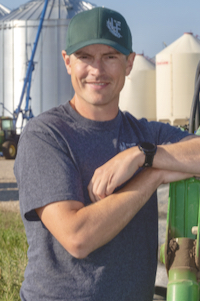
CG: What will drive Canada’s agriculture industry in 2024?
Jake Leguee: Geopolitics is a massive driver of commodity prices these days.
Globalization is dying. This is not a great development for an export-dependent country like Canada. Increasingly, we will see non-tariff trade barriers and other market access issues crop up.
That, combined with modified agricultural policy in regions like the European Union will make it more difficult for us to export.
On the other hand, disruptions to previous trade patterns, wars and environmental policy will create opportunities for Canadian farmers in an increasingly food-insecure world.
CG: How can we meet the challenges of disruption?
Leguee: We can’t stop the roller-coaster the world is riding, but if we can bulletproof our operations, we can survive — and even thrive — through these unknown disruptions.
Holding onto working capital; continuing to build relationships with our advisors and lenders; utilizing marketing tools like futures, options and deferred delivery contracts; and backstopping with insurance will all help us weather whatever storm hits.
If our business is solid and we have a great team to keep it running, there will be very few events that can knock us out.
CG: What emerging opportunities do you see?
Leguee: Canadian agriculture is being pushed hard to improve its environmental footprint. This won’t help us improve yields and will cost us more money to grow our crops if the current policy direction continues, but there is an opportunity here.
In the short term, agriculture will continue to be affected by increasingly stringent policies that remove crop protection products, increase documentation and complicate growing high-yielding crops. We will also continue to face disruptions as the world exits globalization and re-shores its industries. However, further out, as we fully leave globalization and uni-polarity behind, a new world will emerge with far more complex trade agreements that can still offer great opportunity to Canadian farmers.
To have the best success in this changing world, we need to negotiate trade deals and change our focus from reducing absolute emissions to focusing on relative emissions — allowing farmers to improve yields further while still reducing net emissions. As farmers, we can help by sharing what’s happening on our farms, flagging what we need to help them thrive, and pushing our government representatives (or step into these roles ourselves) to create a vision for Canadian agriculture that can help feed, clothe and fuel the world, all while improving our environmental footprint.
CG: So how do you see farming next year, in the next five years and 10 years, and maybe even right up to 2050 when we have to feed 9 billion-plus people?
Leguee: Farmers would benefit from looking into the theories on generational cycles, such as in the book The Fourth Turning by Neil Howe and William Strauss. There are many variations to this idea, but most of them converge on a crisis state similar to what we’re living through.
As we work through this “fourth turning,” what we’re seeing around the world will likely continue to worsen: polarized political views, protests and wars. While all this may seem far from the farmgate, it very much is not, as our commodity markets seem to be taking more of their direction from geopolitical events. So, grain marketing will become more unpredictable, meaning risk management tools like futures and options could become even more valuable.
CG: Is Canadian agriculture ready to meet the challenges of producing 60 per cent more food by 2050?
Leguee: Unfortunately, the answer is no. Our government has chosen to focus more on climate change mitigation and adaptation than on increasing production or on improving logistics.
Governments need to refocus their efforts on plant breeding, increasing investments in research stations and crop breeders rather than focusing so tightly on climate change. Indeed, improved varieties will result in reduced emissions anyway. Paired with that, we need to create a better regulatory environment for grain movement. Recently, Vancouver’s port was rated one of the poorest in the world.
CG: How can a farmer future-proof their business, or future-influence their on-farm decisions?
Leguee: The single most important financial tool a farmer has is working capital, whether through cash flow or by working with lenders. This will keep their businesses secure through most shocks.
Farmers need to accept they can’t know it all. On our farm, we rely heavily on the advice of many individuals to help us discover the unknown unknowns: what we don’t know that we don’t know.
We must be willing to listen to their advice and make decisions, not be paralyzed by over-analysis. Farmers don’t have to get every decision right; they just need to be right enough to keep going, to keep making progress.
– This article was originally published in the December 2023 issue of Country Guide.




